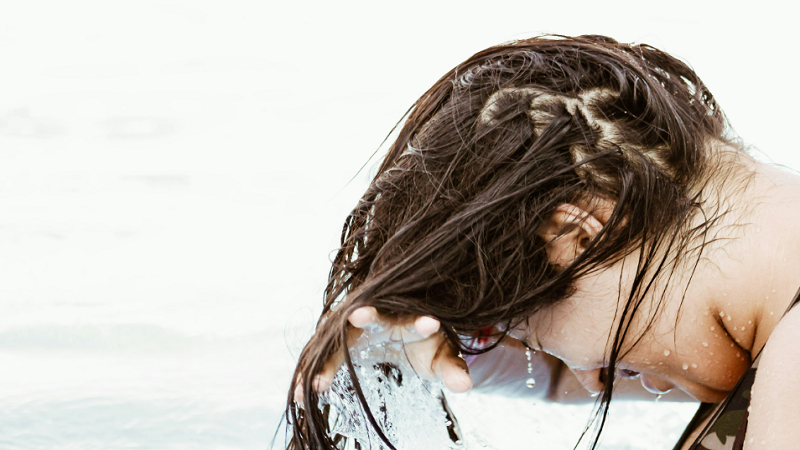For many, hair products are more than just beauty enhancers – they’re confidence boosters and style statements. From sleek, straightened hair to vibrant colors, chemical straighteners, and dyes have become essential tools in personal grooming.
These products promise transformations but often conceal a darker side beneath their glossy allure. While they can help you achieve the look you want, the chemicals in them could pose serious health risks.
Among these risks is the growing concern over breast cancer. The American Cancer Society (ACS) notes that breast cancer contributes to 30% of new cancer cases among women this year. Other countries suffer a similar predicament.
With its rising prevalence globally, it’s crucial to understand how daily beauty routines might contribute to this alarming trend. What exactly makes these products potentially harmful? Let’s explore the hidden dangers lurking in your haircare routine.
Hair Straighteners
Chemical hair straighteners promise sleek, frizz-free locks that last for weeks, using a mix of harsh chemicals to break down the hair’s natural structure. The result? Straight, smooth hair that’s easy to manage. But what if that silky shine came at a much higher cost than the price on the salon bill?
Chemical hair straighteners and relaxers contain endocrine-disrupting chemicals that seep into our skin through the scalp, contributing to the risk of hormone-related cancers.
Michele Lynn, a 38-year-old woman from Florida, was diagnosed with breast cancer in 2019. Lynn fought cancer for four years, a battle she unfortunately lost at 43. Her husband, Mike Lynn, told DrugWatch that she had no history of cancer in her family. She also exercised, ate right, and wasn’t on any medications.
Despite all her healthy lifestyle habits, Lynn had been using chemical hair straighteners since her early teens. While the couple didn’t link the hair straightener to her cancer on their own, growing studies about the subject made them aware of it.
While Lynn lost her life, many other women are still fighting breast cancer due to chemical hair straighteners. A large population of these women have recently come forward to file a hair straightener cancer lawsuit against their manufacturers.
TorHoerman Law notes that hair relaxer litigation is ongoing to help the victims of these products seek compensation. So far, 8,498 cases have been filed under it.
Which other types of cancer can hair straighteners cause?
Besides breast cancer, the extended use of hair straighteners is also known to increase the risk of endometrial cancer, bladder cancer, and uterine cancer. Beyond cancer, the chemicals in these hair products can potentially trigger allergic reactions, skin irritation, and rashes.
Hair Dyes
Hair dyes are a go-to for transforming your look, whether you’re covering grays or trying out a bold new color. They let you reinvent yourself in just an afternoon, adding a touch of glamour or a pop of personality. With an endless palette of shades, it’s no wonder hair dyeing has become a staple in beauty routines worldwide. The appeal of a fresh, vibrant hue is hard to resist.
But beneath those vibrant colors lies a hidden risk. Some hair dyes contain chemicals like aromatic amines and coal-tar derivatives, which have been linked to an increased risk of breast cancer.
These substances can be absorbed through the scalp, potentially disrupting hormonal balance and contributing to cancer development. Studies have shown that women who frequently use permanent hair dyes may face a slightly higher risk. It’s a sobering thought: something as routine as coloring your hair could have serious health implications.
Can hair dye cause skin cancer?
Yes. Skin cancer, or basal cell carcinoma, is one of the cancer types potentially linked to long-term use of hair dyes, notes Cleveland Clinic. Others include bladder cancer, leukemia, uterine cancer, and non-Hodgkin lymphoma. Despite these threats, the WHO hasn’t classified personal use of hair dye as “carcinogenic to humans”.
The Culprits of Cancer in Hair Products
We’ve already established that hair straighteners and dyes are the main perpetrators of breast cancer in the world of hair care. However, upon digging deeper, you’ll learn about certain chemicals that are the real culprits, making these hair products both effective as well as toxic.
The Breast Cancer Organization categorizes these chemicals as carcinogens and hormone disruptors. Below, we’ll throw light on some of these chemicals to help you better understand their dangers:
Phthalates and Parabens
Phthalates and parabens are the not-so-secret ingredients hiding in many beauty products. In hair straighteners and dyes, these chemicals ensure that your hair stays sleek and your color vibrant for longer.
However, their benefits come with a dark side. An Environmental Health News (EHN) article notes that these chemicals are xenoestrogens, which is a term for endocrine-disrupting chemicals that mimic estrogen.
Such chemicals are dangerous because they can add to the risk of hormone-related cancers like breast cancer, even at a low dosage. When these chemicals are absorbed through the scalp, they can also accumulate in your body over time, raising concerns about their use.
Formaldehyde
Formaldehyde is a potent chemical often associated with industrial uses, but surprisingly, it also lurks in many hair straighteners and dyes.
In hair treatments, formaldehyde helps break down hair bonds, leaving you with that glossy, pin-straight look. It’s also sometimes released during the hair-dyeing process, especially with certain permanent dyes, to help lock in color.
However, this chemical is a known carcinogen directly linked to cancer, observes Very Well Health.
When formaldehyde-based products are applied and heated during treatments like straightening, they can release easily inhaled fumes. This exposure has been associated with an increased risk of several cancers, including breast cancer.
The skin, especially the scalp, can also absorb formaldehyde, introducing this toxin directly into the body. While formaldehyde might offer smooth hair and vibrant color, the potential health risks pose a serious dilemma for beauty enthusiasts.
Is formaldehyde banned in the US?
No, not yet. Despite the Food & Drug Association’s (FDA) announcement to ban formaldehyde in hair straighteners, the ban is still not in effect. The federal agency first set April 2024 as the deadline for the ban, which was later pushed to July and finally to September 2024.
Our hair is an important part of not just our bodies but also our image and self-confidence. So it is natural to want to keep them most presentable at all times. However, we must avoid taking unnecessary health risks by using hair products that can expose us to a threat as deadly as cancer.




